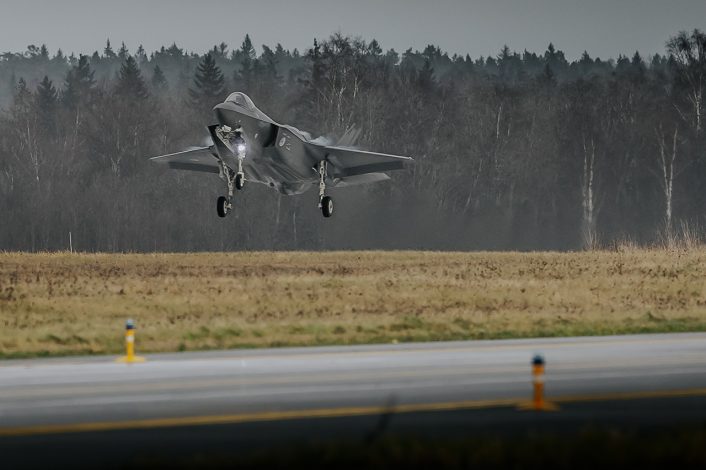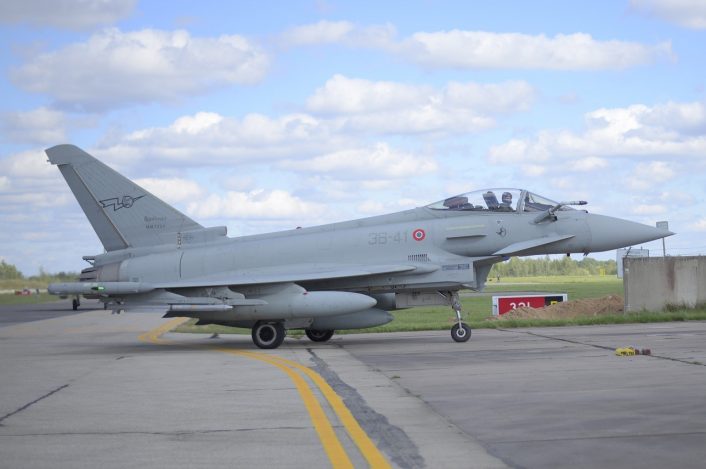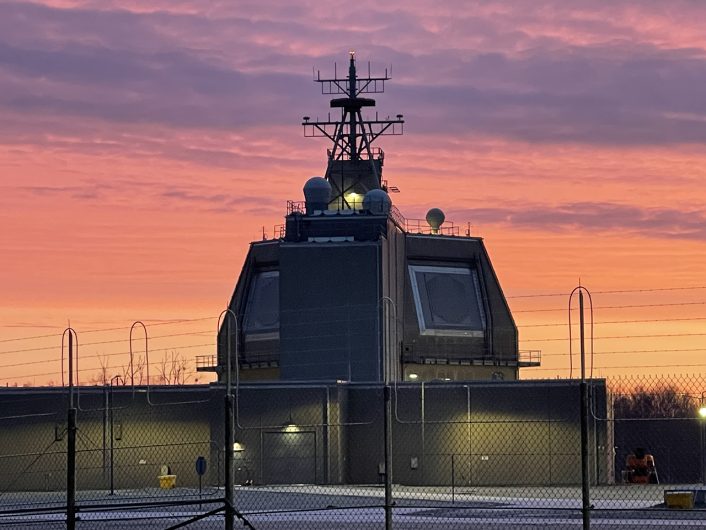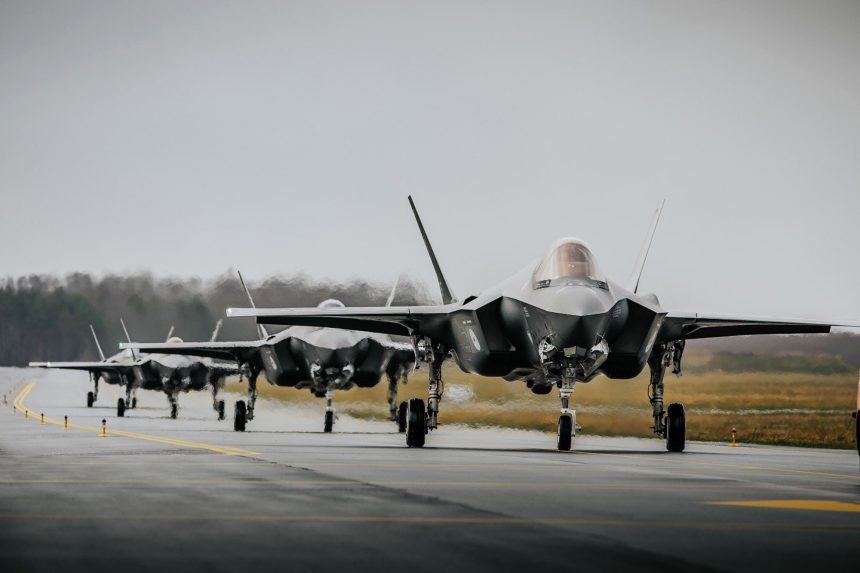The Royal Netherlands Air Force have deployed four F-35A Lightning IIs to Estonia, while French Rafales will augment Italian Typhoons in Lithuania.
Joining the NATO Baltic Air Policing mission from Dec. 1, 2024, until Mar. 31, 2025, four F-35A Lightning IIs of the Royal Netherlands Air Force have deployed to Ämari Air Base, Estonia. They replace German Eurofighters, which have operated from Lielvārde Air Base in Latvia since Mar. 1, 2024. The four aircraft will allow at least two jets to be maintained at high readiness 24/7 for quick reaction alert (QRA) scrambles.
In addition, the existing deployment of Italian Air Force F-2000A Typhoons to Šiauliai, Lithuania, will be bolstered with Dassault Rafale jets from the French Air and Space Force. Fresh personnel have also been dispatched from Italy to allow those deployed since July 30, 2024, to rotate out. This combined deployment is also due to last until March.

The increased number of aircraft will allow for extra training missions to be flown alongside allied forces. NATO Allied Air Command also hints at the deployment of some of these aircraft on Agile Combat Employment exercises, where jets will operate at short notice from other locations, sometimes including makeshift landing strips.
📍 Lithuania | #NATO’s Air Policing missions.
🇫🇷 Rafale just landed in Šiauliai Air Base 🇱🇹, ready to execute #EnhancedAirPolicing missions in the coming days.
Happy to share this duty with our 🇮🇹 ally!#SecuringTheSkies pic.twitter.com/9nvYya4p4T
— The 🇫🇷 Joint Staff – Military operations (@FrenchForces) November 27, 2024
This will be the second time that Dutch F-35As have deployed on the Baltic Air Policing (BAP) mission, having done so previously in 2023 when eight aircraft deployed to Poland. This deployment, like many others for the BAP mission, generated headlines from close encounters with Russian forces – specifically an Ilyushin Il-20M ‘Coot-A’ intelligence aircraft escorted by two Su-27 ‘Flanker’ fighters.
The Dutch F-35s can be seen with radar reflectors fitted on the upper fuselage of the aircraft. These will protect the F-35’s true radar signature from analysis by adversaries while working close to the Russian border and, likely, in direct contact with Russian aircraft. The reflectors are a standard fit during most operations, as they will also help air traffic controllers track the aircraft on primary radar. However, U.S. Air Force F-35s were previously noted over Eastern Europe operating without these devices.
In September, the RNLAF declared full operating capability for their F-35As and the final Dutch F-16s were retired from service. The F-35 had assumed QRA duties in the joint Belgium-Netherlands-Luxembourg (BENELUX) air defense region in March.
Four Dutch F-35s are bolstering NATO airspace surveillance from Estonia.
On the eastern flank, we are deploying a high-tech defensive line against the Russian threat.
A powerful message: the Netherlands is steadfast in defending the security of our Alliance territory. ⤵️ pic.twitter.com/TGmSgOJNbc
— Ruben Brekelmans (@DefensieMin) November 29, 2024
This F-35 deployment marks a return to full operations for Ämari, which earlier this month saw the completion of a €18.5m project to repair and refurbish the base’s runway and other operating surfaces, as well as base logistics facilities. Ämari is now in its tenth year of being a hub for NATO BAP missions.
Vaidotas Urbelis, Defence Policy Director of the Lithuanian Ministry of National Defence, speaking at a ceremony at Šiauliai where the BAP mission was officially handed from one Italian detachment to the next, remarked that “NATO’s air policing mission is more important than ever. We are seeing hostile countries intensifying hybrid attacks, provocations and acts of sabotage on the territories of NATO allies. Reliable protection of NATO airspace in the Baltic States is a key element of deterrence and defense. I thank our Italian and French allies for their commitment to the security of our region”.
Colonel Michele Nasto, the outgoing Italian detachment commander, noted that his detachment of Typhoons had flown over 600 hours since arriving in Lithuania, with another 200 flight hours contributed by an Italian Air Force Gulfstream E-550A Conformal Airborne Early Warning (CAEW) aircraft. 30 high alert scrambles were launched, and 50 Russian aircraft were intercepted. Three QRA launches were even made in the period of a single day.
Meanwhile, the outgoing German detachment in Poland chalked up 1200 flight hours since Mar. 1, with 50 alert launches. Over 1000 personnel supported the mission over the course of the deployment.

Strengthening the Eastern Flank
Following airspace incursions by Russian drones and weapons, a joint letter by defense ministers of Romania, Poland and Lithuania was reportedly sent to NATO allies urging for the strengthening of air defenses on NATO’s Eastern flank.
Alongside the now simultaneous deployment of jets from three nations, a Spanish Army detachment arrived in Estonia in Sept. 2024 to operate a NASAMS air defense missile battery. This follows previous Spanish deployments of the system to Latvia, Lithuania and Estonia in 2023.
The NASAMS, standing for National Advanced Surface-to-Air Missile System, is a Norwegian developed capability using AIM-120 AMRAAMs in a surface-launch role, guided by a AN/MPQ-64 Sentinel radar. NASAMS has now been adopted by many NATO and allied nations, including the United States, who use several batteries to defend Washington D.C. from aerial threats. Ukraine has operated NASAMS since November 2022, and additionally demonstrated its ability to also utilize AIM-9X Sidewinder missiles.
Command of a new AEGIS Ashore installation in Poland was formally assumed by NATO Allied Air Command on Nov. 19, 2024, joining the existing AEGIS Ashore site in Romania and providing a high specification early warning radar capability across a significant part of NATO’s Eastern border. Co-located SM-3 missile launchers offer a direct interception capability if required.

AEGIS Ashore is, as the name suggests, essentially a land-based variant of the AEGIS Combat System fielded by U.S. Navy Ticonderoga class cruisers and Arleigh Burke class destroyers. It uses the same AN/SPY-1 passive electronically scanned array (PESA) radar arrays as the ships. They are fixed to a superstructure that angles each antenna face to provide 360 degrees of coverage in a way that replicates the Arleigh Burke class, both internally and externally. This structure is even referred to officially as the deckhouse. Additional structures elsewhere on the AEGIS Ashore site house Mark 41 vertical launch system cells containing the interceptor missiles.
The UK announced a ‘DIAMOND’ initiative in October, seeking to further integrate NATO’s missile defense capabilities, alongside a defense pact with Estonia which will see the British Army’s 4th Light Mechanized Brigade Combat Team placed at high readiness to deploy to the nation from July 2025. Upon entering service, Estonia will also be the location of the first deployment of the Challenger 3 main battle tank, an upgrade of the Challenger 2 hull with a Rheinmetall 120mm smoothbore gun housed in a brand-new turret.









